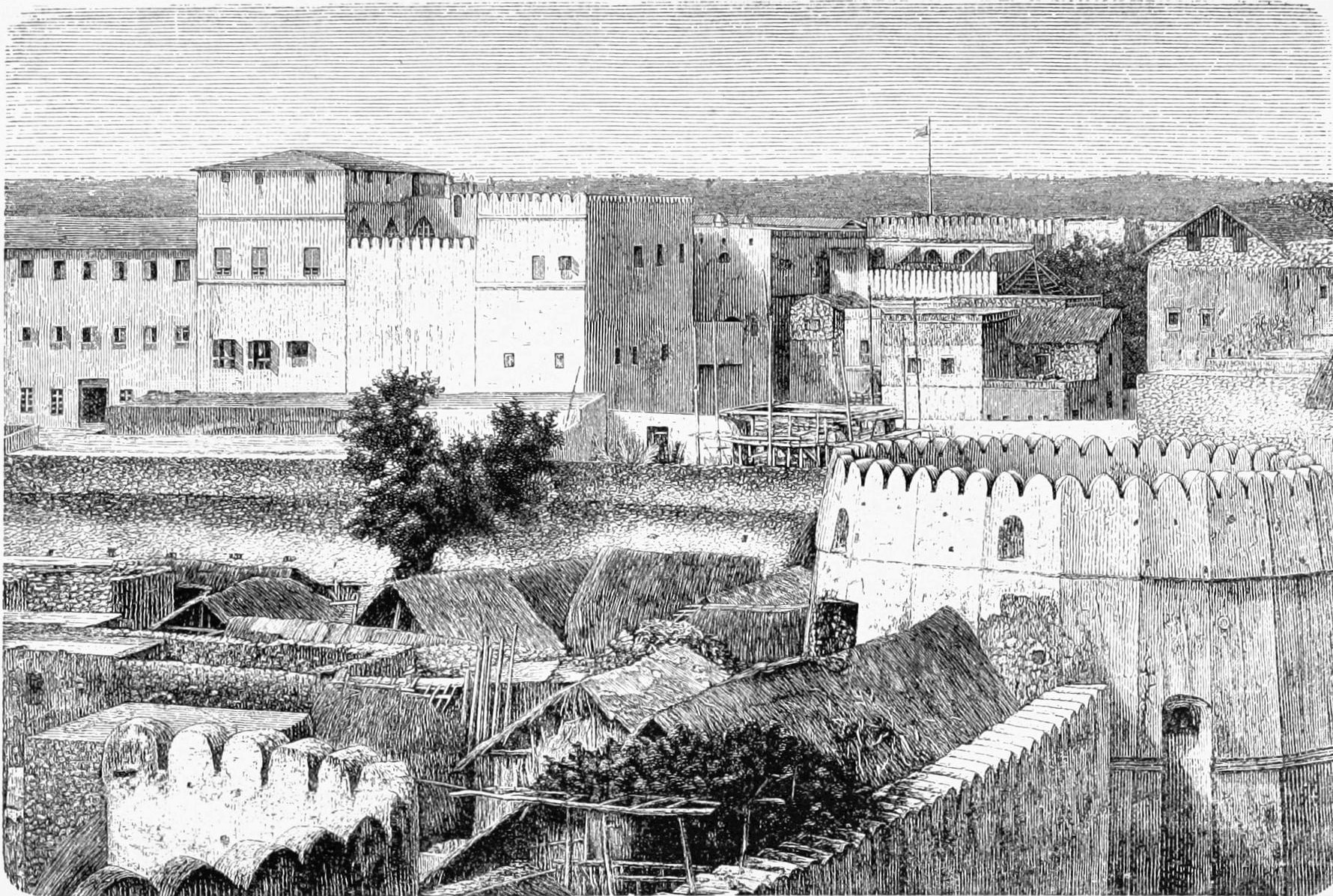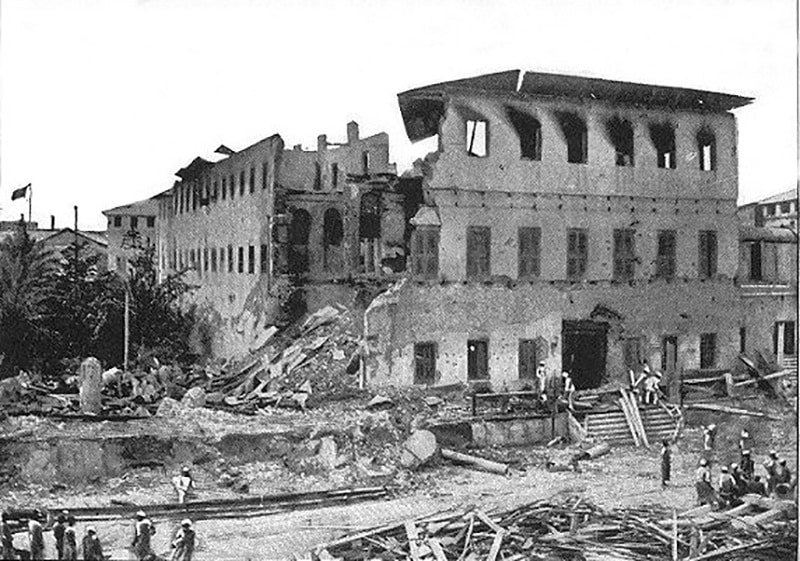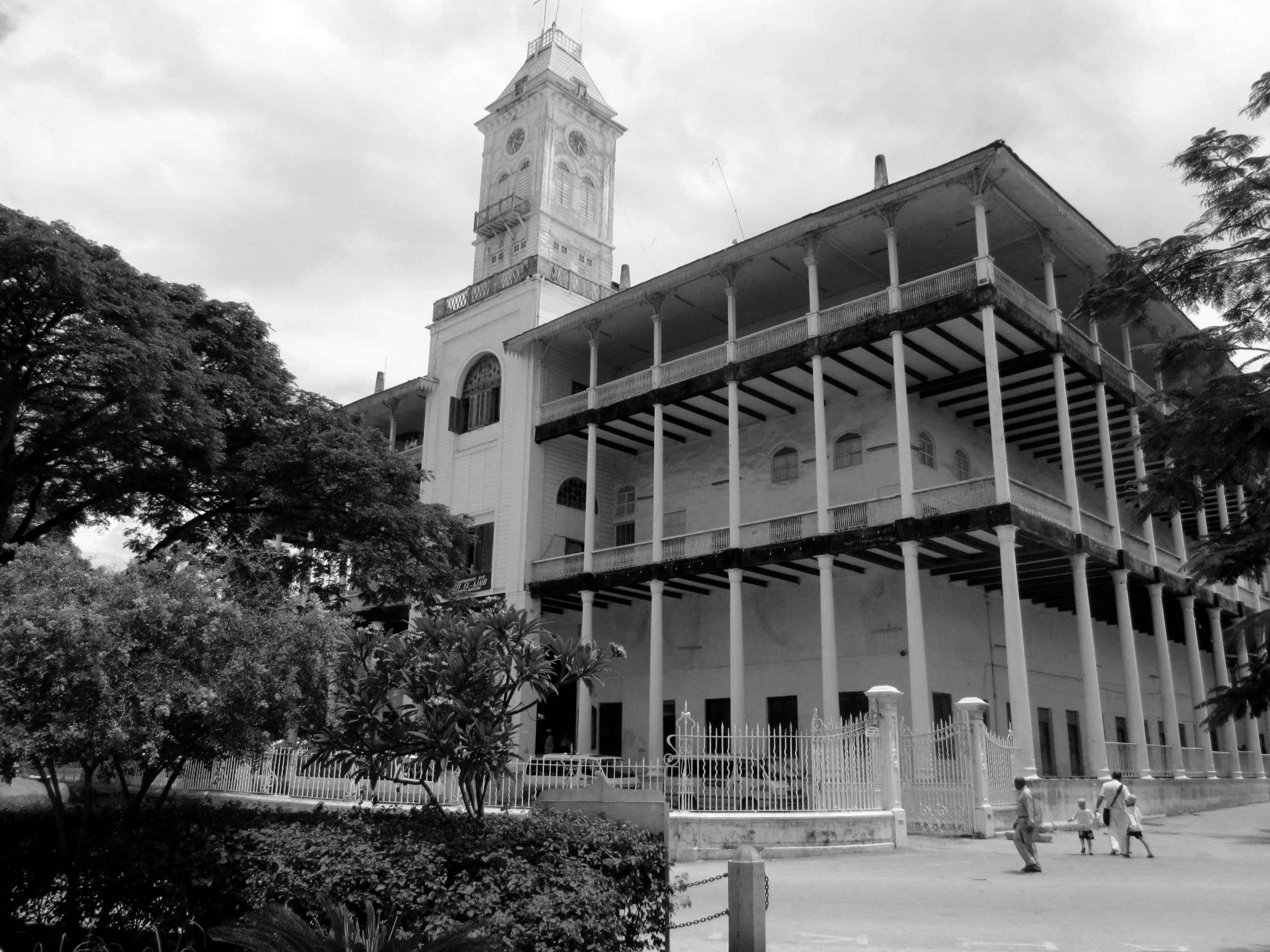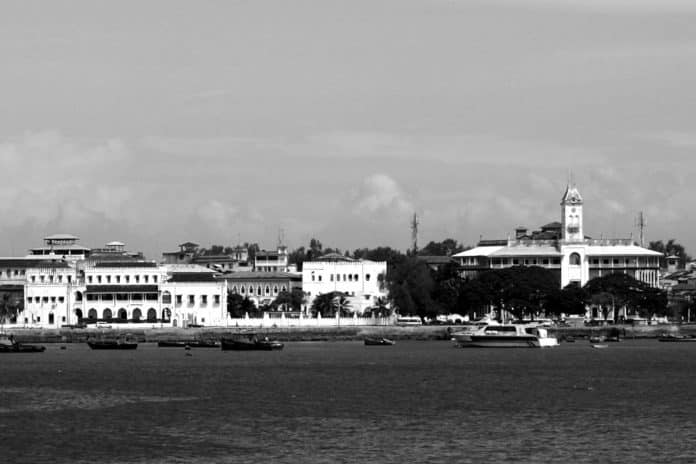Critical Things to Know: Stone Town of Zanzibar (Mji Kongwe)
Stone Town, Zanzibar ( مدينة زنجبار الحجرية in Arabic) is Mji Mkongwe in Swahili meaning old town. The town belongs to the old section of Zanzibar‘s main city in Tanzania (TZ). Ng’ambo, a Swahili word meaning the other side, is the newer part of the city. Stone Town is on Unguja’s western coast, Zanzibar Archipelago’s principal island.
Zanzibar Sultanate’s former capital with a flourishing spice and slave trade by the 19th century, Stone Town preserved its significance as Zanzibar’s leading city in the era of the British colonization. After merging Zanzibar and Tanganyika to create the United Republic of TZ, Zanzibar maintained partial independence whose local government seat was Stone Town.
Mji Mkongwe has outstanding artistic and historical significance in East Africa (EA). Its architecture, primarily from the 19th century, portrays the variations in influences behind the Swahili culture, including the unique blend of Arab, Indian, European, and Persian elements. Thus, the town has been a designated UNESCO World Heritage Site since 2000.
Because of its heritage, Stone Town is a popular attraction to visitors, with a significant portion of its economy coming directly or indirectly from tourism-related activities.
Summary
The centre of Stone Town is a maze of thin alleys bordered by shops, houses, mosques, and bazaars. Most streets are very narrow for vehicles, so motorbikes and bicycles crowd the town. The seafront has planned more significant buildings with wider streets.
The architecture of Stone Town has various distinctive elements, resulting from the blending of Persian, Arab, Persian, Indian, African, European traditions. “Stone Town” originates from the extensive use of coral stone as primary construction material. The town’s signature reddish warm colour is from this stone.
Classical buildings have a Barraza – an extended stone bench along the external walls to elevate the sidewalk in case heavy rains make walking on the streets hard, or people sit on and rest or socialize. Additionally, most buildings have huge verandas covered by barriers made of wood with curves.
Wooden doors are the most prominent feature for houses in Zanzibar, having wooden doors and precise decorations. The doors also have bas-reliefs and rich carvings, usually with Indian style huge brass studs.
The doors come in Indian style with rounded tops or rectangular Omani Arab style. Carvings include Islamic content (for example, Quran verses). However, some symbols are occasionally used, such as prosperity emblems and Indian lotus flowers.
Significant historical buildings fill Stone Town, with many found along the seafront, including churches, fortifications, mosques, palaces for former sultans of Zanzibar and more institutional structures.
Despite its inclusion among UNESCO’s World Heritage Sites by 2000, the designation doesn’t fully protect the town’s heritage.
Regardless of creating a Conservation Authority, approximately 80 percent of Stone Town’s 1,709 buildings are dilapidated. Many of these buildings need regular maintenance since coral stone is brittle. The Aga Khan Trust for Culture (AKTC) recently did significant restoration projects (focusing on the seafront).
Stone Town History
Ancient Zanzibar

A drawing of the palace and the old fort displaying how it looked between years 1871 – 1875[/caption]
The Periplus of the Erythraean Sea, a Greco-Roman book from the 1st to the 3rd century, talked about Menuthias Island ( Μενουθιάς in Ancient Greek), presumably Unguja. Bantu speaking people inhabited Zanzibar, like other nearby coastal areas, in the first millennium. At Fukuchani in the northwest of Zanzibar’s coast, archaeological discoveries indicated a settled farming and fishing community not later than the 6th century CE.
The site’s discovery of considerable daub, shell beads, iron slag, and bead grinders proved timber buildings. Evidence also revealed limited participation in long-distance trade: with the discovery of some imported pottery. Less than one percent of all pottery discoveries had Gulf origins between the 5th and 8th centuries. Resemblance to modern sites including Dar es Salaam and Mkokotoni indicated the development of unified communities that formed the initial source of maritime culture at the coast.
Coastal towns, including Zanzibar, seemed to have participated in the Indian Ocean trade by this period. By the mid-18th century, there was a rapid increase in importance and participation in trade. By the end of the 10th century, Zanzibar was among the prominent Swahili trading cities.
Shangani, a former fishing town, was a tiny and less significant Swahili area founded by the 11th-century Stone Town. Between the 8th and 16th centuries, bigger cities, including Tumbatu, Unguja Ukuu, and Kizimkazi formed the island’s fortresses. During the early 16th century, the Portuguese constructed a church at Shangani with a house built during the mid-17th century for the Queen of North Unguja.
After the people of Zanzibar and Pemba chased the Portuguese by the 17th century, local nobles asked the Sultan of Oman to take over power as a reward for protection from Portuguese reprisals. A portion of the Portuguese church was constructed into the Omani fort, occupied by about 50 soldiers. The sultan elected a native governor, although political power remained vested heavily in Queen Fatima, the Mwinyi Mkuu at the time.
Digging for antiquities on Pemba Island nearby, mostly at Shanga, Lamu Archipelago, offered a clearer impression of architectural development. Homes were originally constructed using timber (c. 1050) and later mud and coral walls (c. 1150). More permanent materials were used to build houses continually.
During the 13th century, stone houses were built bonded using mud, and in the 14th-century, lime was used for bonding stone. Houses constructed with lime and stone were for wealthier patricians. The strong materials allowed flat roofs, but most people resided in one-story thatched homes resembling 11th and 12th-century homes.
To Tom Middleton and Mark Horton, these stone homes had an architectural style without any Persian or Arab elements and should be considered wholly indigenous architecture. Although most of Zanzibar Town’s structures were rebuilt amid Omani rule, neighbouring sites portray the general development of Zanzibari and Swahili architecture before the 15th century.
Omani Rule
Stone Town is on a natural harbour. The first Europeans to come to general development, including Zanzibar Island, were from Portugal. They ruled the island for over two centuries and started building the Old Fort, the first stone structure in Stone Town Tanzania.
Nevertheless, the Sultan of Oman annexed the island by the end of the 17th century. He finished the fort to limit attacks in the future. Building the first stone homes in Stone Town is likely to have started in the 1830s, progressively taking over the first fishing village near the Old Fort. During the period when the Sultan of Oman ruled the Zanzibar Archipelago, the Swahili coast and Mombasa.
Sultan Said bin Sultan relocated his seat to Stone Town from Muscat, Oman, in 1840, entering a period of rapid development in the new capital for the Sultanate of Zanzibar and Oman. When the British outlawed the Indian Ocean slave trade, the wealth of the sultan declined. The economy of Muscat became chaotic, and various Omanis moved to Zanzibar.
Growth in the Arab population in Zanzibar promoted additional growth as more buildings started springing up in the town. Additionally, grand royal buildings, including the palace of the sultan and the House of Wonders were constructed. Consequently, after the succession war in the Omani royal family by 1861, Oman and Zanzibar separated. Zanzibar became independent under Sultan Majid bin Said.
By the 19th century, there was a thriving trade in Stone Town. The town was famous for the trade in slaves and spices (primarily cloves). Towards the middle of the century, the British had a close relationship with the sultanate; David Livingstone is said to have stayed in Stone Town by 1866 while preparing his last expedition into East Africa’s interior.
Consequently, various communities of immigrants from India, Oman, and Persia formed in the same era, resulting from the town’s intense trade. The Sultan of Zanzibar supported the immigration of traders from other countries who amassed a lot of wealth and lived in the city, introducing diversity to the city’s architecture.
Colonial Rule
During the century’s last decades, Zanzibar’s sultans gradually lost assets in mainland EA to the British and Germans. After the Heligoland Zanzibar Treaty of 1890, Zanzibar became a British protectorate. By 1896, an abrupt rebellion by the Zanzibari Omanis contesting British rule turned into the Anglo Zanzibar War – the shortest war in history. The sultan gave up after 45 minutes resulting from the Royal Navy’s bombardment of Stone Town.

While under British protection, Stone Town was a somewhat significant trading post for informal trade, and the sultan retained some authority. Despite having a tiny railway before, the British built a railway from here to the village of Bububu. The British never funded any significant developments in Stone Town but let the sultan manage the islands’ affairs from Stone Town. Dar es Salaam and Mombasa got privileges from the British as their East African trading posts.
Zanzibar Revolution
By 1964, Stone Town became the centre of the revolution in Zanzibar that led to ousting of the sultan, and the emergence of the Afro-Shirazi Party (ASP) led socialist government. More than 20,000 people lost their lives, and others were displaced, mainly Indians and Arabs, as they ran away from the island to escape the consequences of the revolution.
Indians and Arabs left their possessions behind, and the ASP swiftly occupied ancient homes, including converting them into communal buildings. By 1964 after the merging of Zanzibar and Tanganyika to establish Tanzania, Stone Town maintained the role of the government seat in Zanzibar and the capital. It was declared a semi-autonomous area of the new state.
Geography
Stone Town is roughly amid Unguja’s west coast, on a tiny peninsula sticking into Zanzibar Channel. Bagamoyo in the southwest is the nearest prominent settlement on the coast of Tanzania, opposite Stone Town. The town belongs to Zanzibar City, including others like Ng’ambo (“the Other Side”) ‘s New City extending mainly in Unguja’s interior in the south-east. Creek Road is an ideal separating line between Ng’ambo and Stone Town.
Demographics
Important Sites
Ancient Buildings and Locations

- House of Wonders, whose other names include “Palace of Wonders” or “Beit-al-Ajaib”), is along Mizingani Road by the Stone Town seafront, presumably the most famous landmark in Stone Town. Its construction was in 1883 with restoration after the 1896 Anglo-Zanzibar War.
A former residence of the sultan, this place became the ASP seat by the end of the revolution. The building was the first in Zanzibar to get electricity and to have a lift in EA. From 2000, its interior has been a museum on Zanzibar and Swahili culture. By December 2020, during renovations, a considerable section of the structure collapsed.
- The Old Fort or Ngome Kongwe in Swahili, near the House of Wonders, is a massive stone fort built by the Omanis during the 17th century. Its other name is Omani Fort, built by the ancient leaders to protect the city against Europeans’ invasion.
It has a rough square form with the inside courtyard a cultural centre today with a tiny arena hosting daily music and dance shows, shops, and workshops. The fort also hosts the Zanzibar International Film Festival.
- A prosperous Indian trader built the Old Dispensary, also known as Ithnashiri Dispensary, between 1887 to 1894. It was a charity hospital for the poor before turning into a dispensary later.
The dispensary is among the buildings with the finest decorations in Stone Town Zanzibar Tanzania, having huge carved balconies made of wood, neo-classical stucco embellishment and stained-glass windows. After deterioration from the 1970s to the 1980s, AKTC restored the building accurately.
- The Palace Museum, whose other names include the “Sultan’s Palace” or “Beit el-Sahel” in Arabic) also used to be a palace of the sultan. It sits along the seafront, with the House of Wonders in the north.
The palace was built during the late 19th century and is a museum today highlighting the daily life of the royal family in Zanzibar, including Sayyida Salme’s belongings. This princess fled with her husband to Europe.
- The Anglican Cathedral of Christ Church, on Mkunazini Road, was built by Edward Steere, the third bishop of Zanzibar, towards the end of the 19th century. The church in the middle of Zanzibar Stone Town sits in a large area that previously hosted Zanzibar’s largest slave market. The location was deliberately selected to mark an end to Zanzibar slavery. Its altar was located precisely where the market’s main whipping post was located.
- French missionaries built the Roman Catholic Cathedral of St. Joseph from 1893 to 1897. The design of the Marseille Cathedral inspired the church’s structure. It has a façade with two high spires. It’s among Stone Town’s most famous landmarks, seen from afar when sailing ashore. The church still operates today with regular mass every Sunday.
- Forodhani Gardens, a tiny park in Stone Town’s central sea walk, in front of the House of Wonders and the Old Fort. The Aga Khan Trust for Culture recently spent 3 million dollars to restore its garden.
Every evening after sunset, the garden is a popular venue for a tourist-oriented market offering grilled seafood, including other Zanzibar food recipes attracting locals and tourists.
Transport
Stone Town’s streets are too narrow and virtually getting anywhere in the town is on foot. The cramped streets offer shade, with virtually everything accessible. Nevertheless, bicycles and recently motorcycles use slightly wider roads to transport goods and people. You can access the town of Zanzibar, including other regions, through three points.
Dala Dala (shared taxi) is Zanzibar’s primary form of public transport, with the principal station by the Darajani Market. The shared taxi connects Stone Town to other locations on the island, including Bububu village in the north, Amaan Stadium, the airport, Magomeni, and Jang’ombe.
Mabasi (“bus“, single “basi” in Swahili) are available for longer trips. These are trucks modified to transport passengers. The primary “mabasi” station is near the Market with the “mabasi” network stretching all over the whole island as the most affordable transport means for long distances,
Zanzibar island’s primary harbour is in the middle of Stone Town, with routine ferries from Pemba and Dar es Salaam connecting the Stone Town to the mainland. Zanzibar Airport (Abeid Amani Karume International Airport) is just 9 km (5.6 m) in the south of the town. So, flights are available to mainland Tanzania, especially Dar es Salaam Arusha including other main airports in Africa like Mombasa, Nairobi, and Johannesburg.
Climate

The whole Zanzibar Archipelago, including Stone Town, experiences the same climate around the year. Zanzibar experiences hot tropical weather throughout the year. February and March are the hottest months, while July and August are cooler.
Significant rainfall is available during most months, with an extended rain season covering March to May with a shorter rainy season during November and December. There’s a minor dry season from December to February, including May to August, making it the peak season for beach tourism for travellers who come to the island.
Stone Town Prominent Residents
- Tippu Tip (slave trader)
- Bi Kidude (singer)
- Ali Muhsin al-Barwani (independent Zanzibar’s first foreign minister)
- Freddie Mercury alias Farrokh Bulsara (British band, Queen’s lead vocalist) born here
- David Livingstone (colonialist, explorer and missionary from Scotland)
Accommodation in Stone Town Zanzibar
If you’re looking for where to stay during your visit, there are plenty of accommodation stone town Zanzibar options.
Check out this list with the best places to stay in stone town.
Hotels in Stone Town Zanzibar
Maru Maru Hotel Stone Town Zanzibar Tanzania
Considered one of the best hotels in stone town, Maru Maru provides the ultimate haven amongst Stone Town’s labyrinth of winding alleys, bustling markets, mosques, and famed Zanzibari doors.
Africa House Hotel Stone Town Zanzibar
The africa house stone town is located within the prime and historic Stone Town overlooking the open sea and gardens and minutes from the beach and vibrant Shangani square featuring some of the best night life on the Island.
Doubletree by Hilton Hotel Zanzibar Stone Town
The double tree Zanzibar stone town is a 4-star hotel located in the heart of Stone Town, Zanzibar, Tanzania. The doubletree by Hilton stone town features 58 guest rooms and suites, each decorated in a contemporary style with Zanzibari accents. All rooms are equipped with modern amenities such as air conditioning, flat-screen TVs, and complimentary Wi-Fi.
Doubletree Zanzibar stone town is considered the best stone town hotel. Check out the website of doubletree stone town!
5 Star Hotels in Stone Town Zanzibar
Park Hyatt Zanzibar
This boutique hotel stone town zanzibar is one of the best hotels in stone town zanzibar. It is the ideal romantic hotel. It is nearby landmarks like Mercury House and The Old Fort. All of their guest rooms have a flat screen TV, a minibar, and air conditioning, and free Wi-Fi.
Emerson Hotel Stone Town
The Emerson Hotel Stone Town is a boutique hotel located in the heart of Stone Town, Zanzibar, Tanzania. The hotel features nine individually decorated rooms and suites, each with its unique charm and character.
Cheap Hotels in Zanzibar Stone Town
Coffee House Stone Town
The Hotel Coffee House Stone Town is a budget-friendly hotel located in the heart of Stone Town, Zanzibar, Tanzania. The hotel features 20 comfortable rooms with air conditioning and private bathrooms. There is a rooftop terrace where guests can relax and enjoy views of the city.
Kisiwa House
Out of all the stone town zanzibar hotels, this one is a top-rated among visitors. Kisiwa House is a cheap hotel in zanzibar stone town, located at the heart of the city. The hotel features eleven spacious rooms, each with its unique character and traditional Zanzibari decor. The hotel’s rooftop restaurant offers stunning views of the city and serves a variety of local and international cuisine.
These are just a few of the many Zanzibar stone town hotels. There’s something for everyone!
Other Accommodation Options
If you don’t wish to stay at one of the stone town hotels, you can opt for an Airbnb stone town Zanzibar.
You can check out the options here: Airbnb Zanzibar stone town
Or you can also look for apartments for rent in stone town Zanzibar.
Best Restaurants in Stone Town Zanzibar
There are many amazing stone town restaurants Zanzibar. Here’s a list of the best restaurants stone town Zanzibar has!
Beach House Stone Town
The beach house restaurant is the perfect spot to catch a beautiful sunset with great food and drink options. They are vegetarian Friendly, and they have vegan options, halal, and Gluten-free options.
Stone Town Tavern
Also known as La Taverna International, this is one of the best restaurants in stone town. It sells seafood, Italian, pizza, Mediterranean, and Spanish foods.
Stone Town Cafe
This is not just a restaurant, but also a bed & breakfast, located in a heritage building in the best place to stay in Stone Town. Many people consider it one of the best restaurants in zanzibar stone town because of their great location and food options.
Fun Fact! Stone town grill is not a restaurant located in Stone Town, Zanzibar. Instead, this restaurant is in the US and it sells American Fusion Healthy food. Check out the stone town grill menu and stone town grill locations here!
Other Locations in Stone Town
Check out these other places in Stone Town, Zanzibar!
- Anglican cathedral stone town zanzibar
- Big stone gap town hall
- Shopping stone town
- Stone town movies
Fun Fact! There’s another town called Baoshan stone town, but this one is located in China.
For more articles related to Tourist Attractions in Tanzania click here!


































